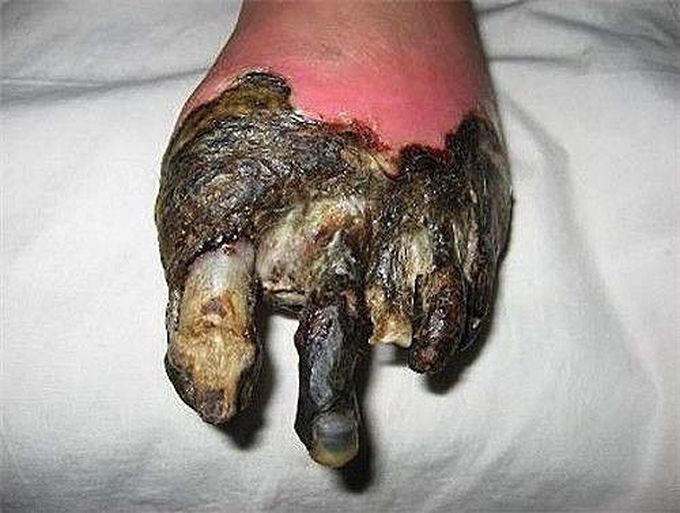


Dry gangrene of the foot as a result of diabetic related complications!!!
Often a blood vessel will be acutely blocked, stopping blood flow to a focal area of the foot which may result in localized gangrene. People with diabetes are at high risk of developing gangrene (commonly the dry form without pus) due to the fact that high blood sugar levels damages the nerves, particularly those of the feet, which makes it easier for a patient to injure himself without realizing. It also damages blood vessels, restricting the blood supply to the feet, tissues are deprived of oxygen, thus causing the cells to die. Moreover, the compromise of the blood supply from microvascular disease, often in association with lack of sensation because of neuropathy, predisposes persons with diabetes mellitus to foot infections. These infections span the spectrum from simple, superficial cellulitis to chronic osteomyelitis. Infections in patients with diabetes are difficult to treat because these individuals have impaired microvascular circulation, which limits the access of phagocytic cells to the infected area and results in a poor concentration of antibiotics in the infected tissues. In addition, diabetic individuals can not only an infection called fetid foot, a severe and extensive, chronic soft-tissue and bone infection that causes a foul exudate, but they may also have peripheral vascular disease that involves the large vessels, as well as microvascular and capillary disease that results in peripheral vascular disease with gangrene.

